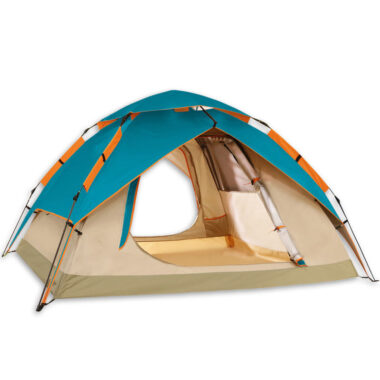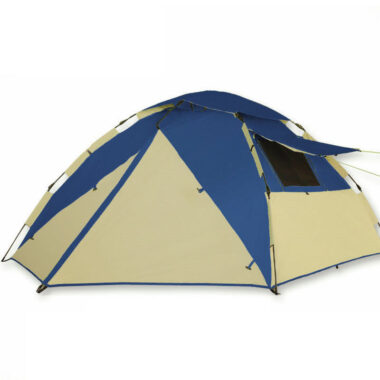🎯 1. Understanding Custom Tent Design
Creating custom camping tents starts with defining how the product will be used — for backpacking, family camping, or glamping resorts. Each purpose needs different frame materials, tent structures, and waterproof ratings.
A professional tent manufacturer or supplier will help you evaluate these aspects, ensuring the right mix of strength, weight, and ventilation.
Customization isn’t only about color or logo; it’s about engineering performance that fits your customer’s expectations — easy setup, weather protection, and reliable durability for years of outdoor use.
🧵 2. Choosing the Right Fabric
Fabric choice defines your tent’s performance. Most factories offer polyester, nylon, or canvas.
Polyester is lightweight and quick-drying, perfect for backpacking tents.
Nylon has excellent tear resistance and flexibility under tension.
Canvas is preferred for luxury glamping tents — heavy, breathable, and elegant.
For waterproofing, fabrics often receive PU (polyurethane) or silicone coatings. The hydrostatic head (mm) shows waterproof level — usually 1500–5000 mm.
A reliable factory will provide coating test reports and recommend the best balance between water resistance, breathability, and weight.
🏗️ 3. Structural and Functional Customization
Once the fabric is chosen, structure defines usability. You can customize:
Tent type: dome, tunnel, cabin, bell, or pop-up.
Poles: aluminum for strength or fiberglass for flexibility.
Entry system: single or dual doors, mesh layers, and vestibules.
Floor design: PE or Oxford fabric for waterproof and abrasion resistance.
Some brands also request blackout linings, extra vents, or removable footprints.
A capable tent factory can quickly adapt your specifications through CAD design and pre-production sampling.
🏷️ 4. Branding and Logo Options
Branding makes your tents recognizable. Manufacturers usually support several logo applications:
Silk screen printing — simple and affordable.
Heat transfer — clean finish for small logos.
Embroidery or woven labels — ideal for premium glamping tents.
Color matching follows Pantone codes, ensuring brand consistency across tents, bags, and accessories.
You can also customize packaging — retail boxes, hang tags, or carry bags with printed barcodes.
A strong OEM/ODM supplier ensures your branding looks professional both in stores and online listings.
🧪 5. Sampling and Quality Verification
Before mass production, ask for pre-production samples (PPS).
This allows you to check:
fabric weight and coating,
stitching quality,
color consistency,
and logo placement accuracy.
Top factories provide detailed sample reports and revisions before final approval.
This stage protects both brand integrity and your investment, especially for new product launches.
🚚 6. Order Quantity, Lead Time, and Support
Most suppliers offer flexible MOQs — sometimes as low as 100 units for new models.
Standard lead time: 30–45 days after sample confirmation.
When choosing a factory, ensure communication is fast and transparent.
A professional supplier also assists with shipping, export documentation, and after-sales service such as spare parts or replacements.
🌍 7. Final Thoughts
A well-designed custom camping tent combines functionality, branding, and reliability.
Whether you’re launching your first product line or expanding an outdoor range, working with the right OEM/ODM factory ensures every tent reflects your brand identity.
Custom design is more than visual — it’s a long-term strategy to stand out and grow your outdoor business globally.








